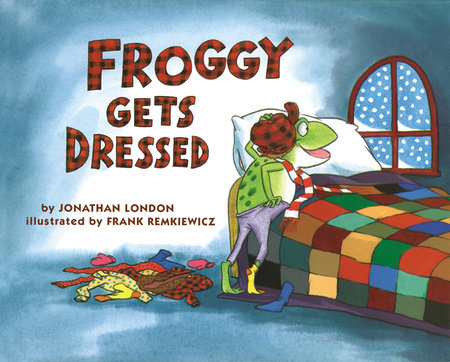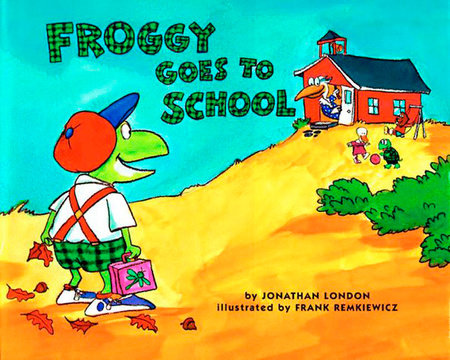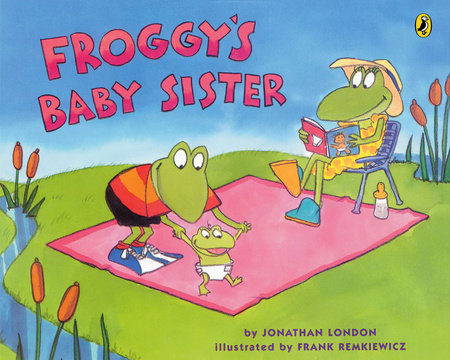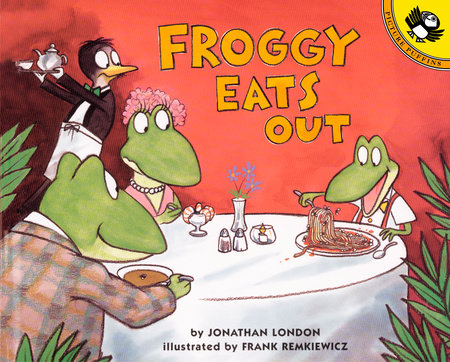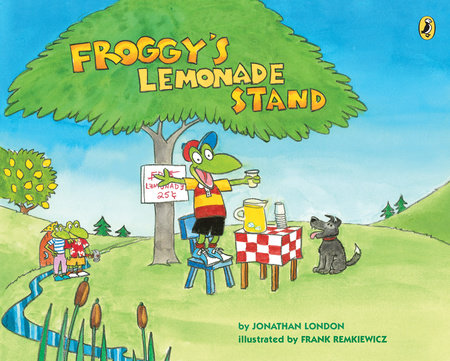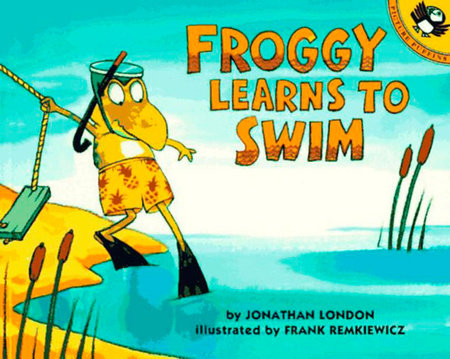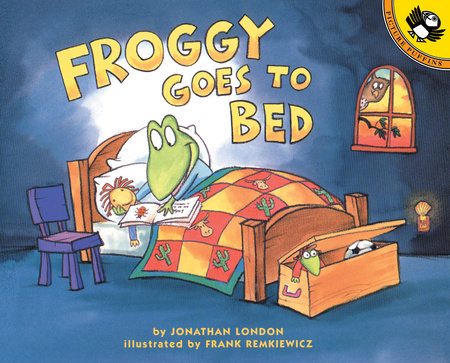5 Ways To Use Jonathan London’s Froggy Series for Teaching
by Lindsay Barrett
Froggy, of the Froggy series by Jonathan London, is one of those treasured kid-lit characters with the enduring power to make readers smile. He’s always upbeat (and a bit aloof), always up for learning new things, and tries his best to be a kind friend and family member. He makes his share of missteps that leave him “more red in the face than green,” but his stories are full of laughs and relatable lessons. Froggy books are reliably gentle without feeling babyish — as proven by the fact that my older kids still edge their way onto the couch if I’m reading one aloud at bedtime.
I’m constantly discovering new, compelling books for different teaching purposes, but I also like to keep some old standbys in my stack. The Froggy series fits that bill. Here are five ways Froggy books make excellent teaching titles in the classroom or for at-home learning:
1. Stories about everyday experiences build children’s oral language.
There are Froggy titles about many kids’ rites of passage, like going to school, getting a new sibling, navigating friendships, and going to the doctor. Froggy takes many typical childhood challenges in stride, like bike riding, swimming, and being polite in a restaurant. Sharing these stories with young children introduces them to vocabulary and situations they can relate to. Froggy books easily inspire kids’ projects and play, letting them test-drive that language in a different context. After reading Froggy stories, many kids would love to have a lemonade stand, play restaurant, or host a pretend sleepover with stuffed animals.
2. Froggy’s challenges can launch social-emotional learning conversations.
Froggy’s life has ups and downs; his experiences provide a safe context for kids to talk about emotions. His mishaps — exploding his mother’s birthday cake, losing his “huggy,” or falling off his bike — encourage conversations about flexibility, coping with embarrassment, and perseverance.
3. You can use Froggy stories during lessons to identify story elements and retell story events.
Froggy books have predictable story structures, making them supportive when teaching about characters, settings, problems, and solutions or retelling the beginning, middle, and end of stories in sequence. But, they also include enough varied events to stretch kids’ capacity to remember and retell details. (Plus, many Froggy books start with Froggy having a dream that tests kids’ ability to sift out the actual story events.) Characters stay consistent across the titles, providing kids with multiple data points when identifying character traits.
4. Froggy’s antics are fun to visualize.
Visualizing supports readers’ comprehension (and enjoyment) of books. The myriad funny scenes in Froggy books — like when Froggy dives into the pond and loses his bathing suit — are ideal for getting kids talking about what they imagined as they read or listen. It feels natural to pause during reading to ask kids what they’re picturing in their minds or to have them write and draw about “the movie in their mind” during a favorite scene.
5. Froggy stories are full of chances to study writing craft moves.
Jonathan London uses several signature craft elements across all the Froggy titles, making it easy for kids to discuss them and try them in their writing. Onomatopoeia, or words that convey sound, is featured in all of Froggy’s escapades, especially when he gets dressed with a “zap, zip, zoop!” Each story features signature repeated phrases, like Mom or Dad calling, “FRROOGGYY! and the regretful, “‘Oops!’ cried Froggy, looking more red in the face than green.” Kids love to try out a repeated line in their writing.
Froggy books model more nuanced narrative writing strategies, too. Pull a Froggy book off the shelf for a clear example of telling about an experience bit-by-bit in detail. Use story excerpts as examples when kids are ready to include dialogue in narrative writing; the brief conversational exchanges are manageable to imitate. They also include varied vocabulary; Froggy and his family members often cry, yelp, yell, or sing in addition to “saying” their words. Finally, there are plenty of clear examples of using punctuation effectively to convey meaning.
It’s comforting for kids to return to a favorite character in a series again and again. Thanks, Froggy, for sharing all your adventures with young readers and writers!
-
Get Popular Froggy Books:
-
Froggy Gets Dressed
Also available from:Froggy Goes to School
Also available from:Froggy's Baby Sister
Also available from:Froggy Eats Out
Also available from: -
Froggy Bakes a Cake
Also available from:Froggy's Lemonade Stand
Also available from:Froggy Learns to Swim
Also available from:Froggy Goes to Bed
Also available from:

